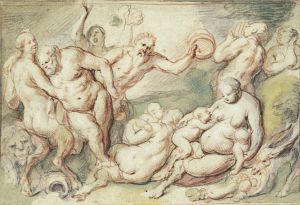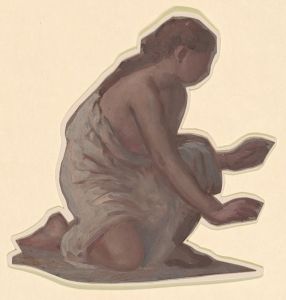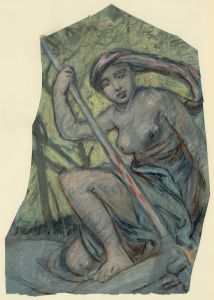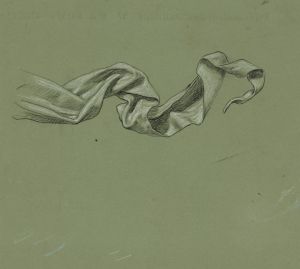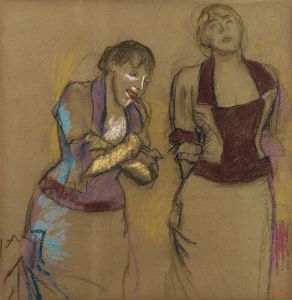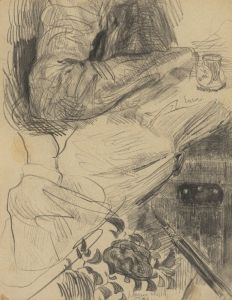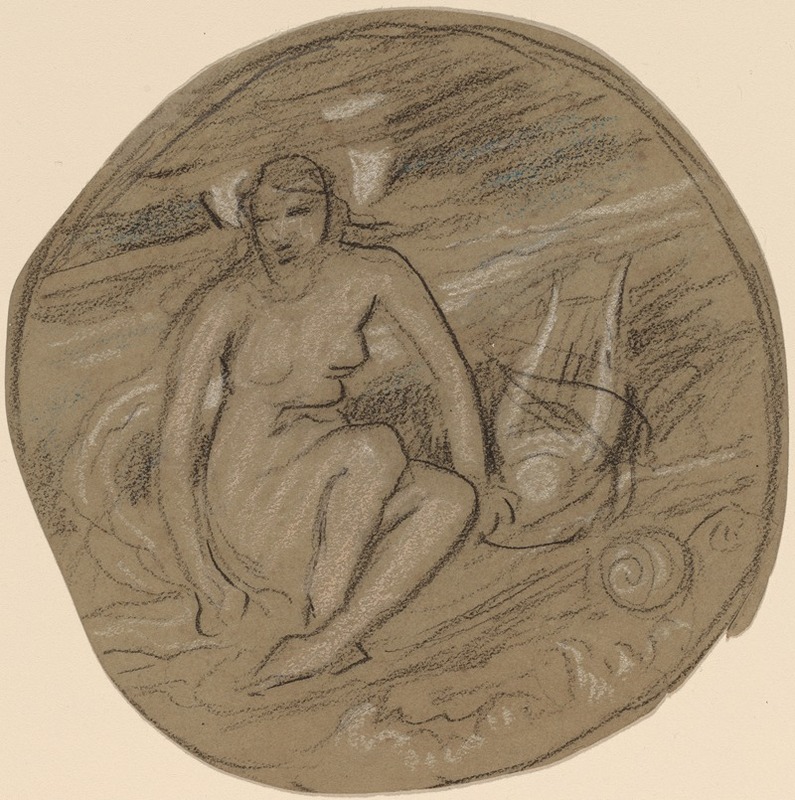
Study for ‘Music’
A hand-painted replica of Elihu Vedder’s masterpiece Study for ‘Music’, meticulously crafted by professional artists to capture the true essence of the original. Each piece is created with museum-quality canvas and rare mineral pigments, carefully painted by experienced artists with delicate brushstrokes and rich, layered colors to perfectly recreate the texture of the original artwork. Unlike machine-printed reproductions, this hand-painted version brings the painting to life, infused with the artist’s emotions and skill in every stroke. Whether for personal collection or home decoration, it instantly elevates the artistic atmosphere of any space.
Elihu Vedder, an American symbolist painter, created "Study for ‘Music’" as part of his exploration into allegorical and mystical themes. Vedder, born in 1836 and active during the late 19th and early 20th centuries, was known for his unique style that often incorporated elements of symbolism and mysticism, reflecting the broader cultural movements of his time.
"Study for ‘Music’" is a preparatory work that showcases Vedder's interest in the allegorical representation of music. Although specific details about the creation date and the medium used for this particular study are not widely documented, it is consistent with Vedder's broader body of work, which often involved preparatory sketches and studies that informed his larger, more finished pieces.
Vedder's artistic career was marked by his travels and experiences in Europe, particularly in Italy, where he was influenced by the Renaissance and classical art. This influence is evident in his use of allegory and his focus on themes that transcend the mundane, aiming to capture the spiritual and philosophical dimensions of human experience. "Study for ‘Music’" likely reflects these influences, as music itself is often seen as a universal language that connects the earthly with the divine.
The study may have been part of Vedder's process in creating a larger, more comprehensive work, possibly intended for a mural or a significant painting. Vedder was known for his meticulous approach to art, often creating multiple studies and sketches before finalizing a piece. This method allowed him to explore different compositions, forms, and expressions, ensuring that the final work conveyed the intended symbolic meaning.
Elihu Vedder's contributions to art were significant during his lifetime, and he was part of the American expatriate community in Rome, which included other notable artists and writers. His works often explored themes of fate, destiny, and the human condition, with "Study for ‘Music’" fitting into this broader thematic exploration. Music, as an allegorical subject, would have allowed Vedder to delve into ideas about harmony, rhythm, and the ethereal qualities of sound, translating these abstract concepts into visual form.
While specific exhibitions or collections featuring "Study for ‘Music’" are not extensively documented, Vedder's works are held in various public and private collections, including major institutions such as the Metropolitan Museum of Art and the Smithsonian American Art Museum. These collections often highlight his role in the American symbolist movement and his impact on the art world during his era.
In summary, "Study for ‘Music’" by Elihu Vedder represents the artist's engagement with allegorical themes and his meticulous artistic process. It reflects his broader interest in symbolism and the exploration of universal themes through art, contributing to his legacy as a significant figure in American art history.





